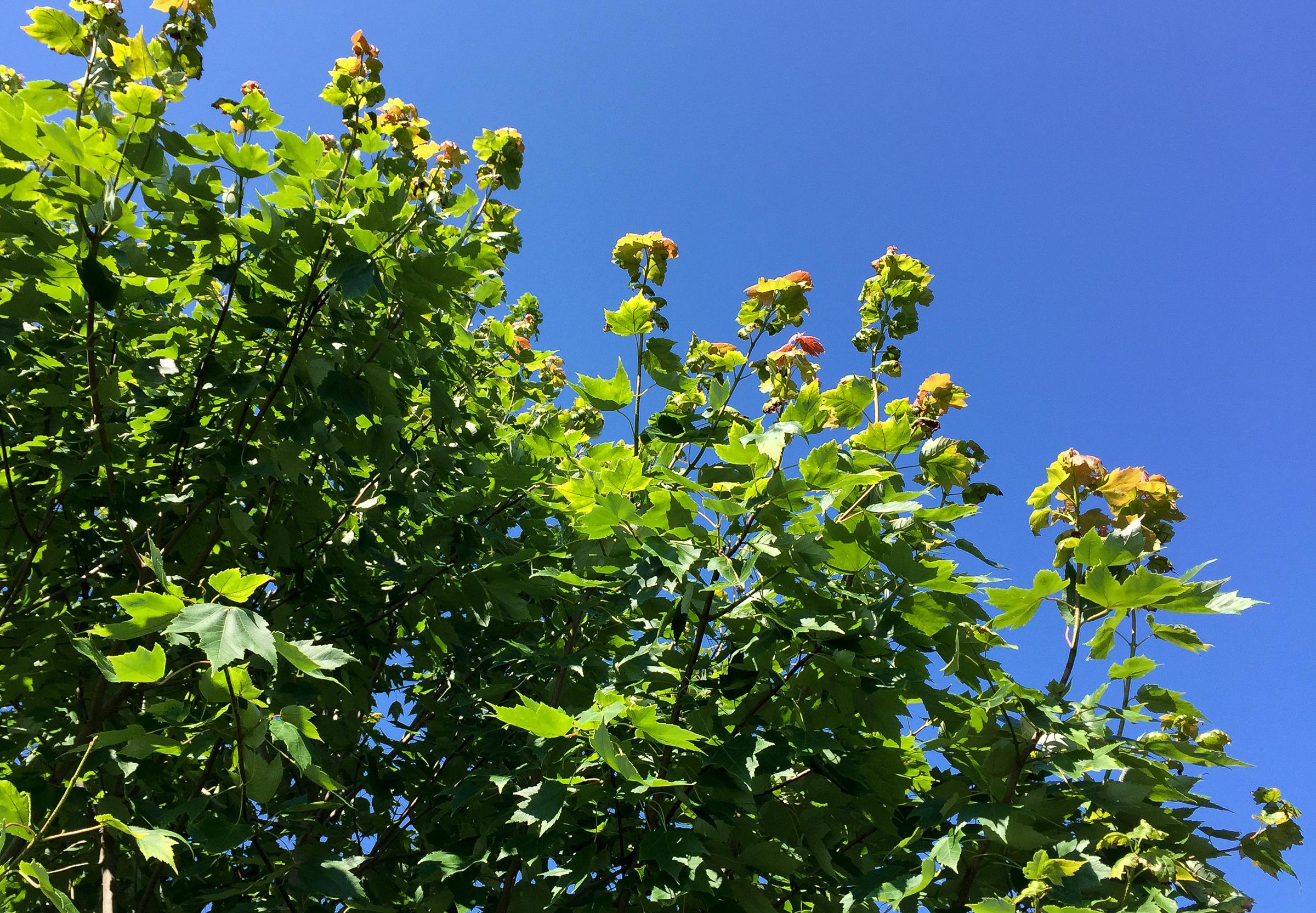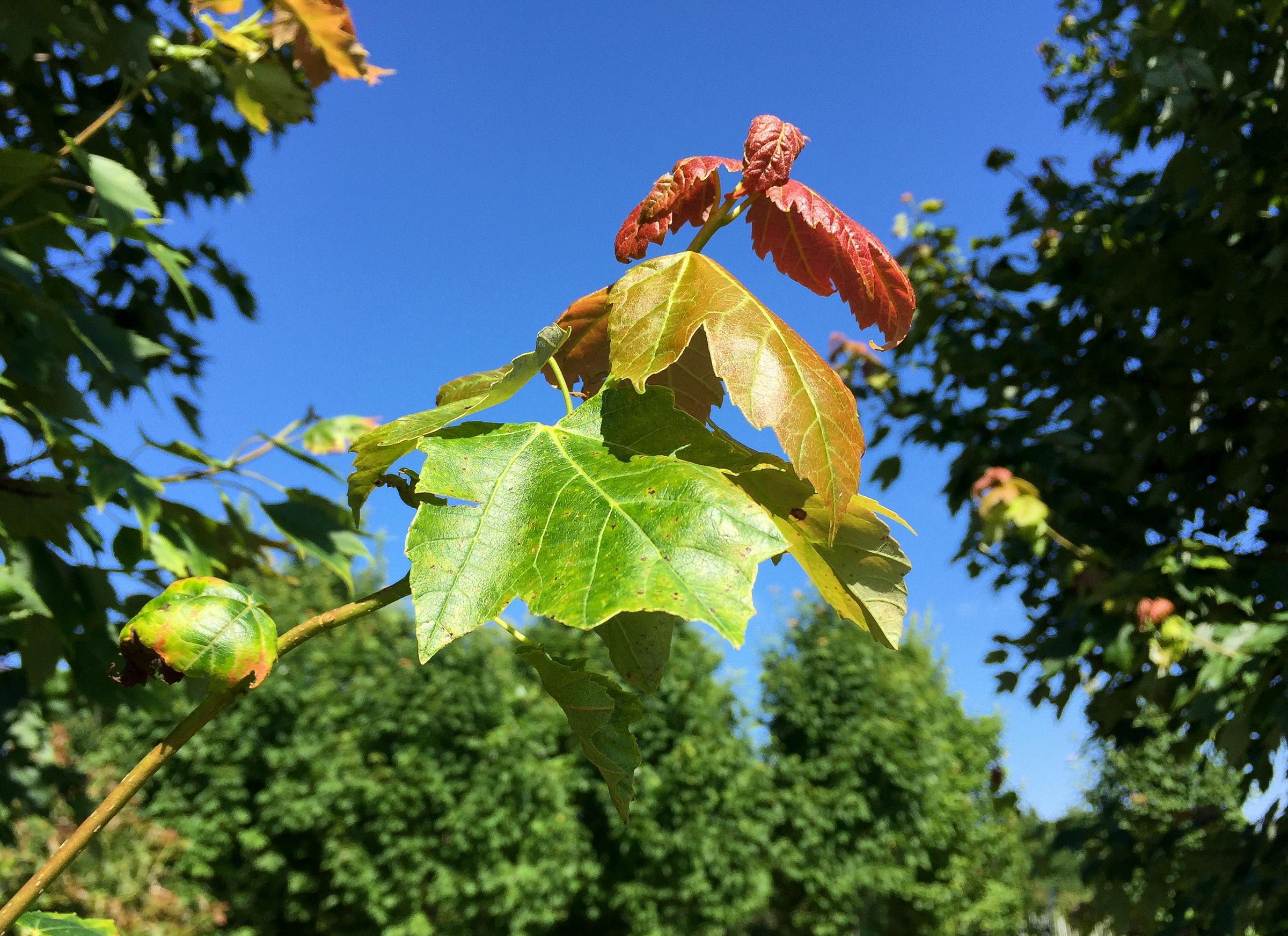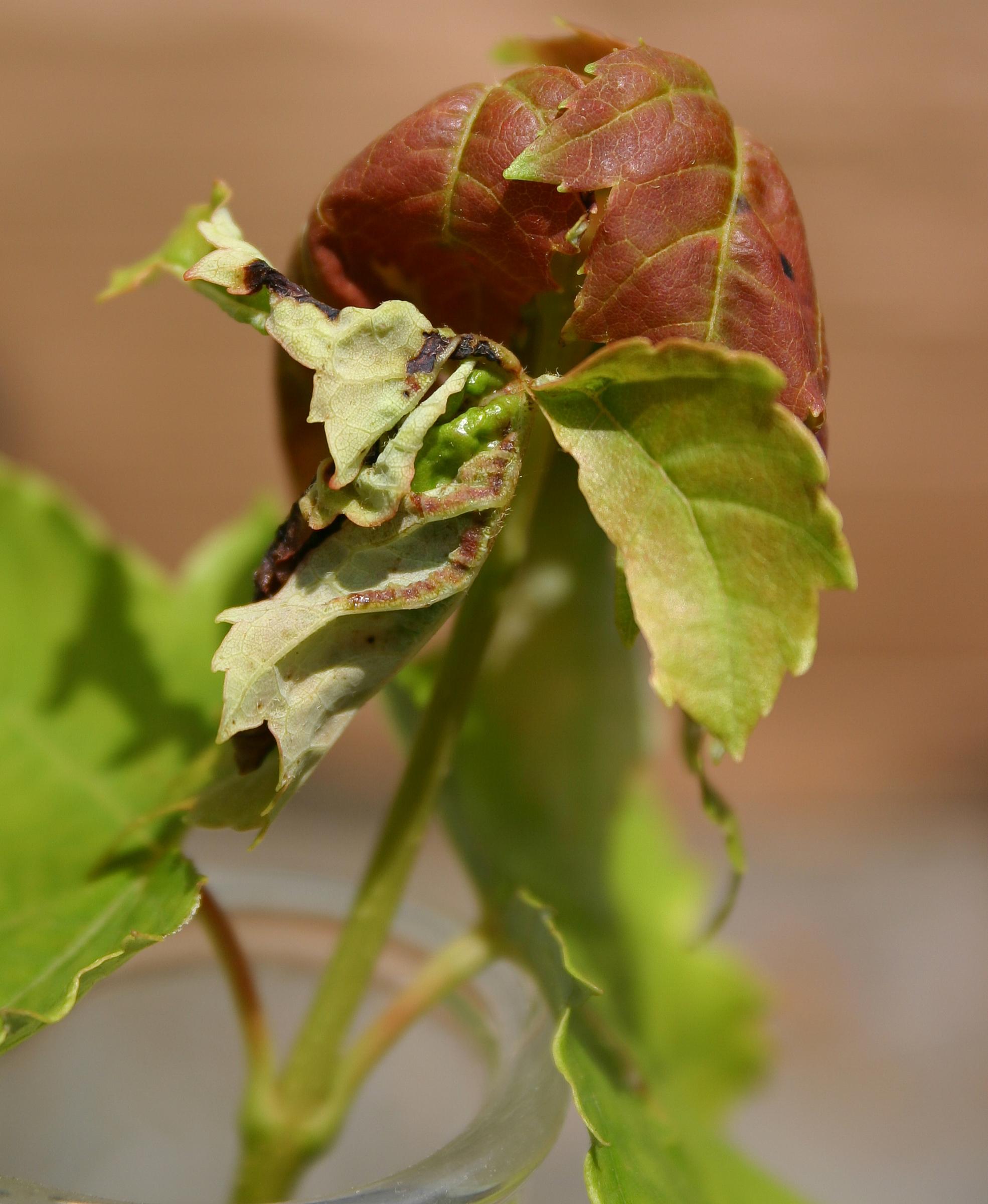Solutions
Plant breeders at the National Arboretum have released 3 red maples (Acer rubrum) that have fair resistance to leafhopper damage. A. rubrum ‘Somerset’ (a cross between A. rubrum ‘October Glory’ and A. rubrum ‘Autumn Flame’) and ‘Sun Valley’ (a cross between A. rubrum ‘Red Sunset’ and A. rubrum ‘Autumn Flame’) were released to the nursery trade in 1994. ‘Sun Valley’ is hardy in zone 4 – 7. ‘Somerset’ is hardy to Zone 8. Both of these male selections have excellent fall color that is long lasting and have significant tolerance to leafhopper injury. ‘Somerset’ at 12 years old is 23 feet tall with an 11 foot crown. ‘Sun Valley’ at 10 years of age is 21 feet tall and 10 feet wide. A. rubrum ‘Brandywine’ (another cross between A. rubrum ‘October Glory’ and A. rubrum ‘Autumn Flame’) is a male selection that was also released in 1994 and has similar resistance to leafhopper damage. The fall color on this red maple is a brilliant red-purple. Over 12 years, it can grow to 25 feet tall with a 12 foot crown.
Chemical Control Options
Read labels on the pesticide container to see if they impact pollinators. Do not spray plants that are in bloom with materials that have listed on the label “do not spray when a plant is in bloom”. The impact of the neonicotinoid class of insecticides on pollinating insects such as honey bees and native bees may be a cause of concern. Presently, it is unknown at what level, if any, neonicotinoids are present in the blooms or pollen. Applying imidacloprid (Merit, Mallet, and many other brand names) as a foliar spray after bloom time reduces the chance that pollinators will contact the insecticide. Foliar applications of the material does not result in long term persistence in the plant. When imidacloprid is applied as a soil drench, it acts differently and remains in a plant for longer periods of time. If applied as a soil drench, imidacloprid has to be applied 2 to 3 months before the targeted insect is present. The chemical could be present in flower blooms, thus impacting pollinators. Soil applications of imidacloprid that are absorbed through roots result in the plant metabolizing the compounds. Some of the resulting breakdown products are equally toxic or even more toxic to pollinators than the original compound. Also, the imidacloprid when absorbed through roots of plants remains in the plant for 2 to 3 years, and it is unknown if it is present in the pollen for this length of time. The use of imidacloprid on flowering plants has fallen out of favor since it remains in a tree for 1 - 2 years and can be uptaken into blossoms.
Altus from Bayer company is a true systemic insecticides that can be applied either as a spray or basal trunk drench.
Dinotefuran (Safari, Transtect) is also a neonicotinoid. It is more water soluble and is taken up by plants faster than imidacloprid. It can be applied as a basal trunk spray and be taken up into foliage in a couple of weeks. When dinotefuran is uptaken into the plant, it also forms metabolites, but they can break down rapidly compared to imidacloprid, and are non-detectable by the end of the season.
Acetamiprid is another neonicotinoid that is highly water soluble, and has a relatively short residual lasting a couple of weeks. Apply acetamiprid after bloom only as a foliar application. You can make foliar applications of Acephate (Orthene), but this treatment would have to be repeated for the multiple generations that occur over the summer. Acetamiprid (Tristar), Discus, and Kontos can also be applied as a foliar spray in nursery beds.
The information given herein is supplied with the understanding that no discrimination is intended and no endorsement by University of Maryland Extension is implied. Read labels carefully before applying any pesticides.



